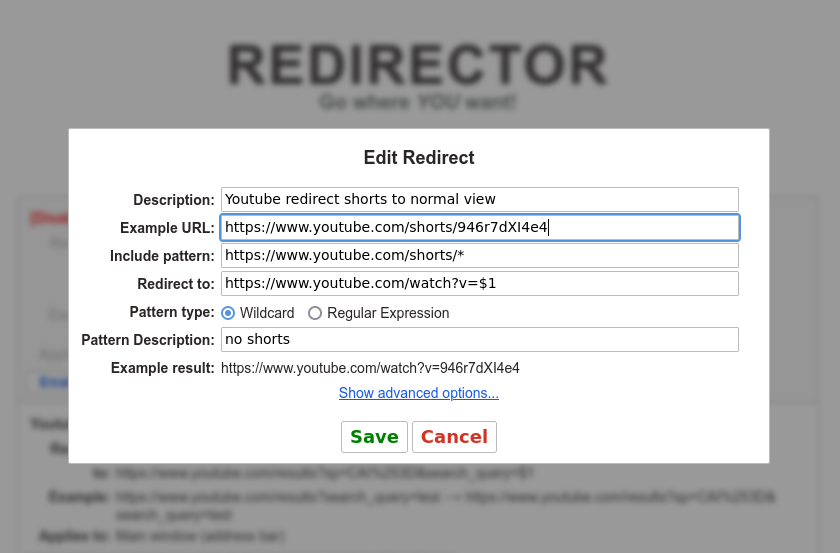Youtube shorts redirect to normal viewer
Problem: Desktop view of youtube.com shorts uses a new video format which is annoying, automatically loops and harder to comment on.
Solution:
Firefox or Chrome extension prerequisite: “Redirector” by Einar Eglisson. https://einaregilsson.com/redirector/
Note: It may require browser restart to function properly.
Settings:
Description: Youtube redirect shorts to normal view
Example URL: https://www.youtube.com/shorts/946r7dXI4e4
Redirect: https://www.youtube.com/shorts/*
to: https://www.youtube.com/watch?v=$1
pattern: wildcard
See my earlier tip for redirecting youtube searches to sorted results:
https://steronius.blogspot.com/2021/09/youtube-search-sort-newest-first.html
as always, good luck!
Please consider crypto tipping:



